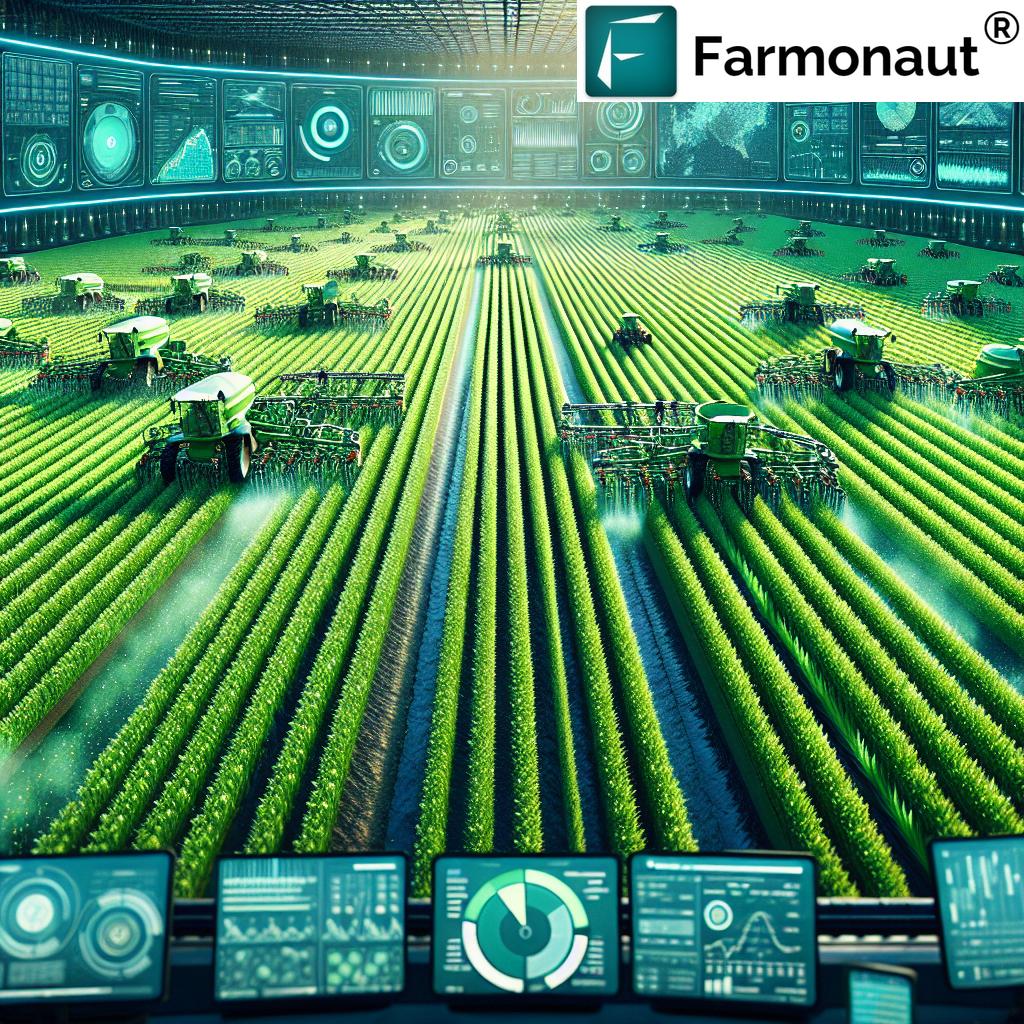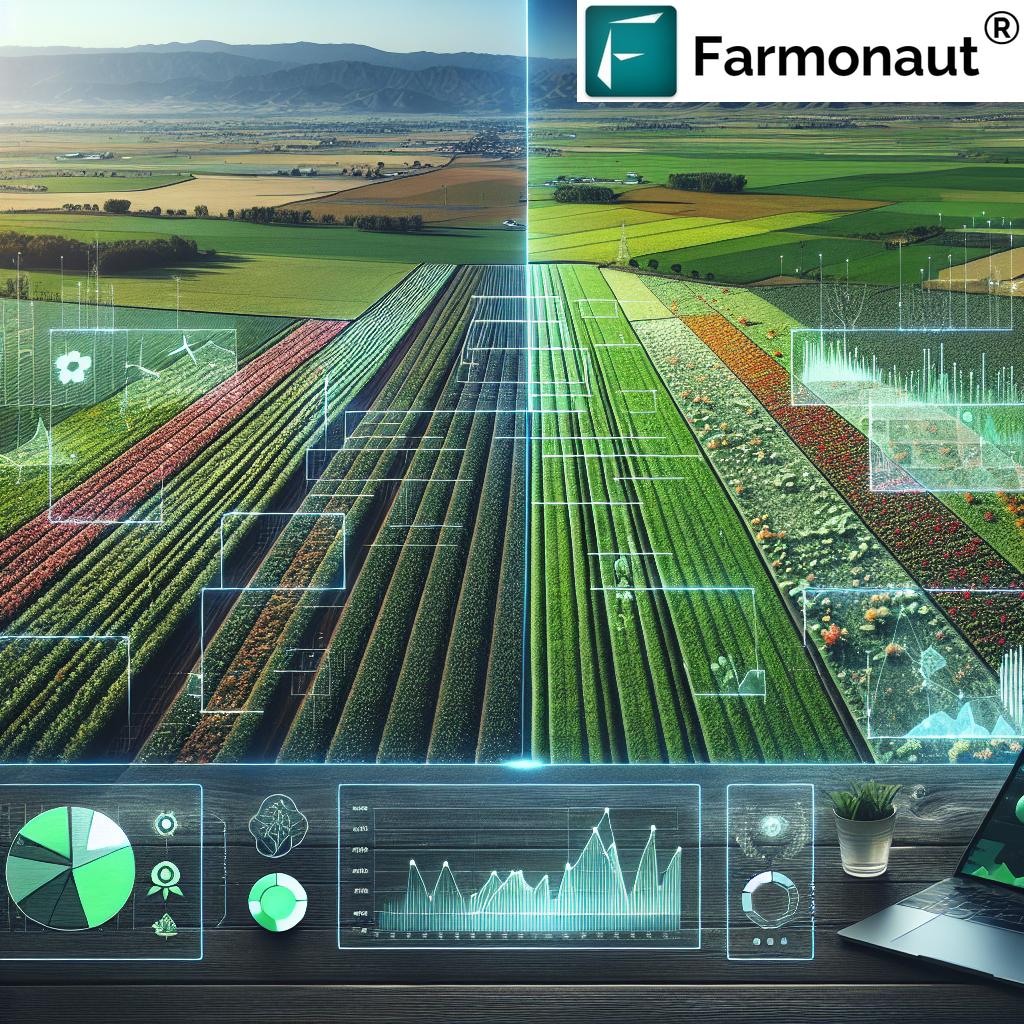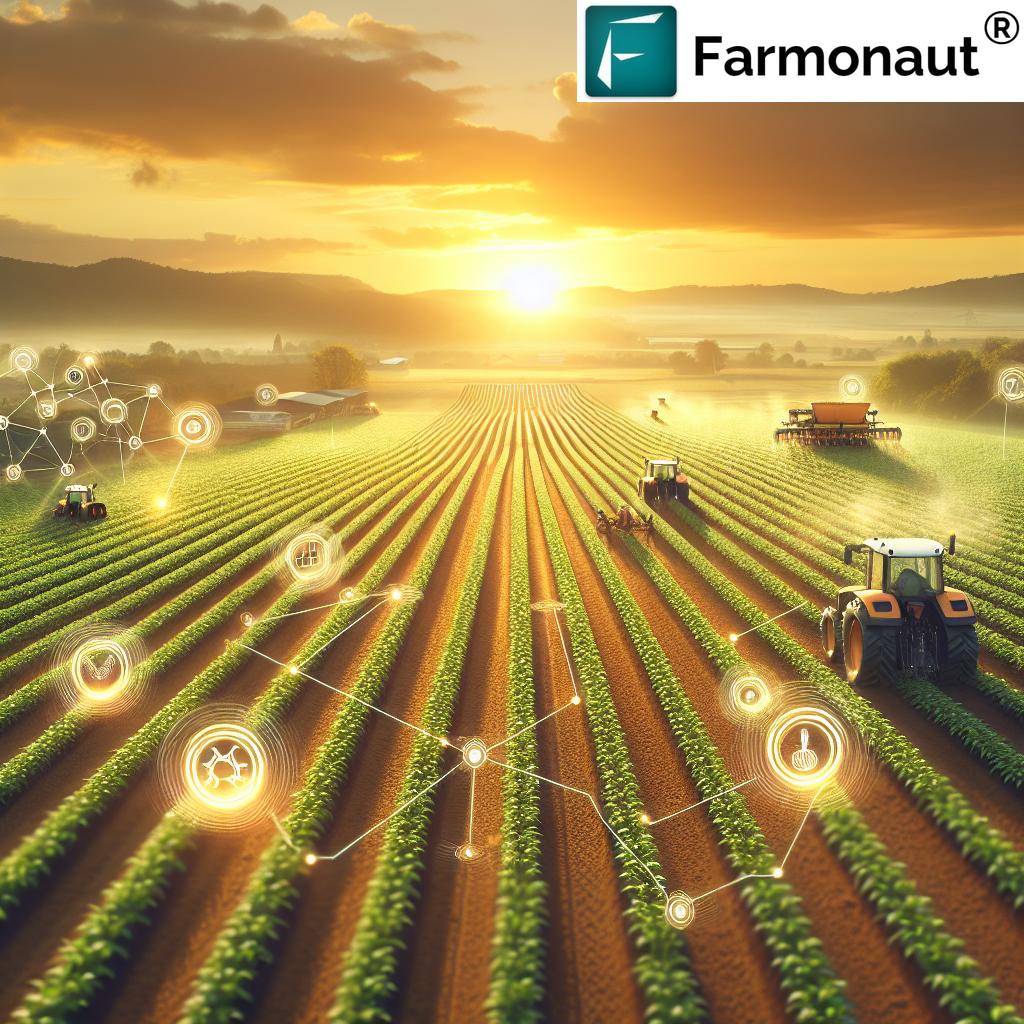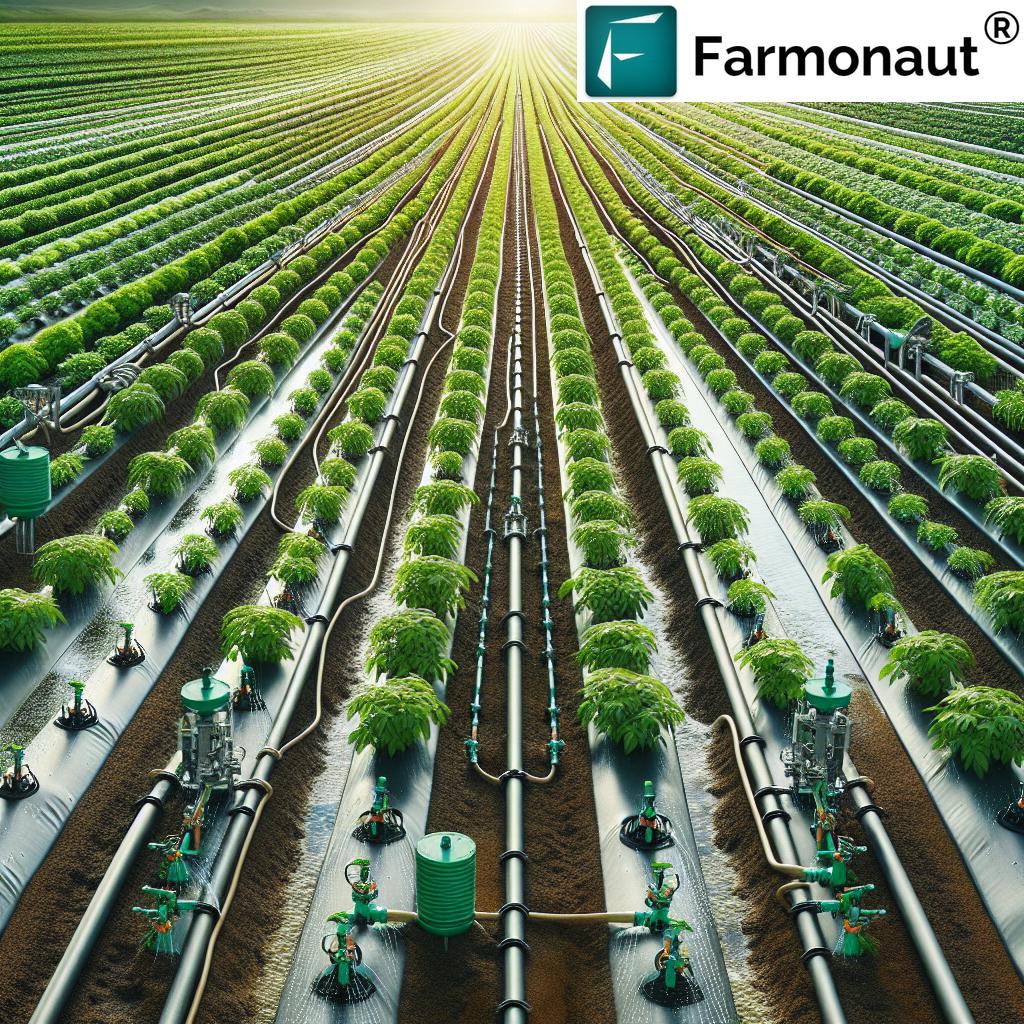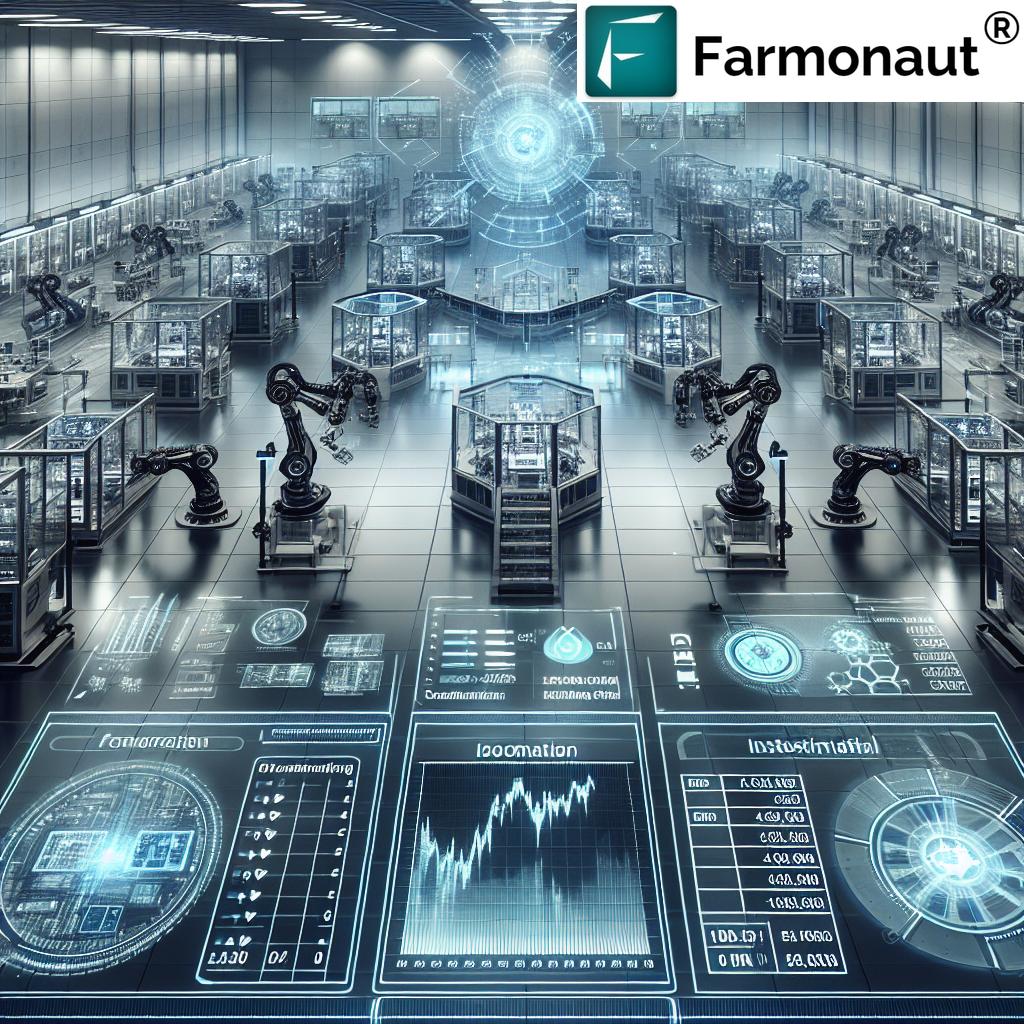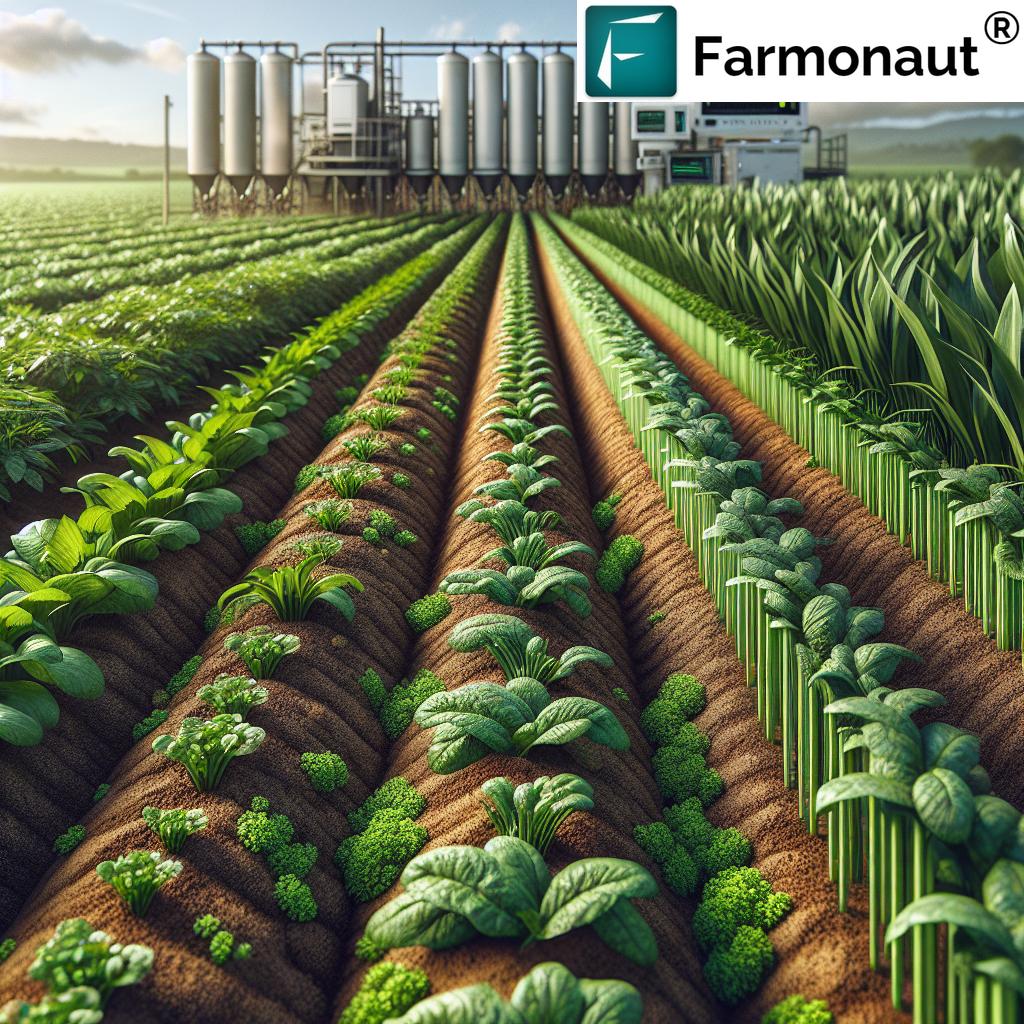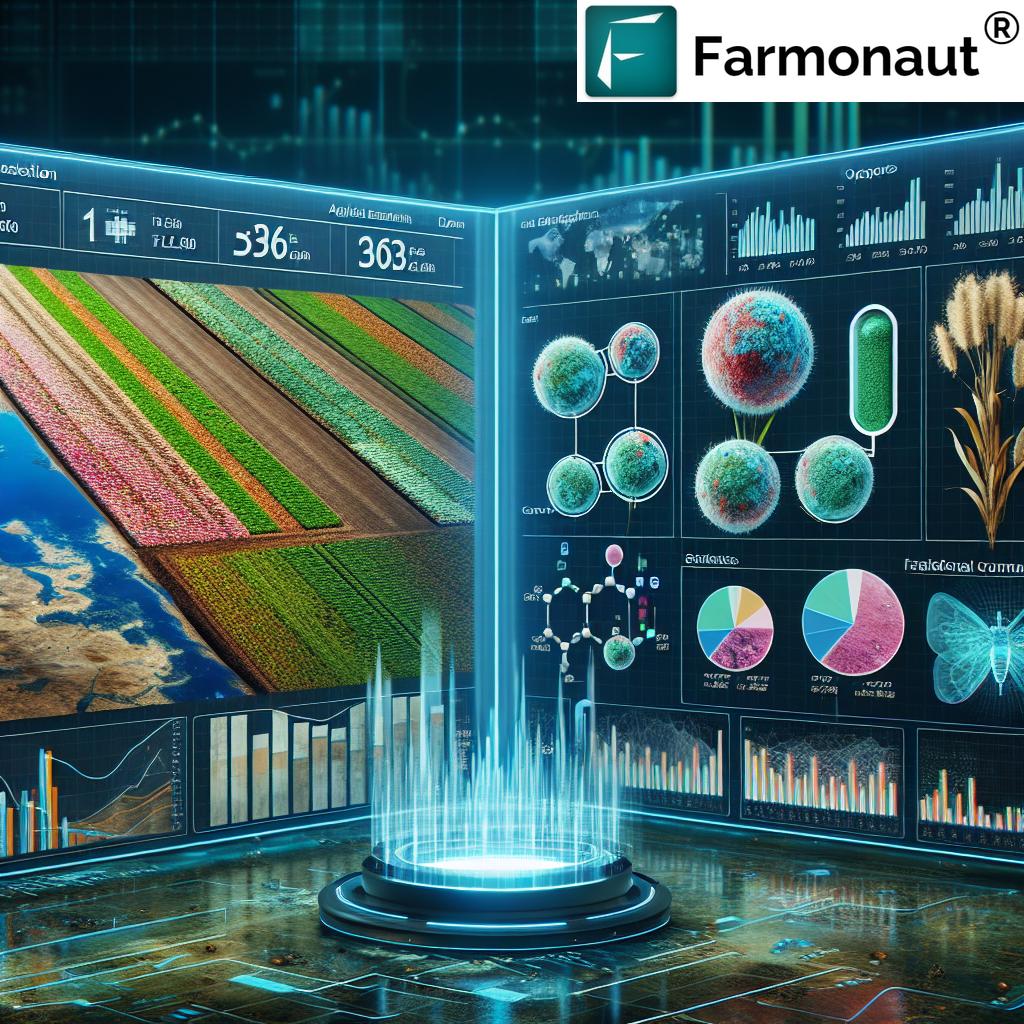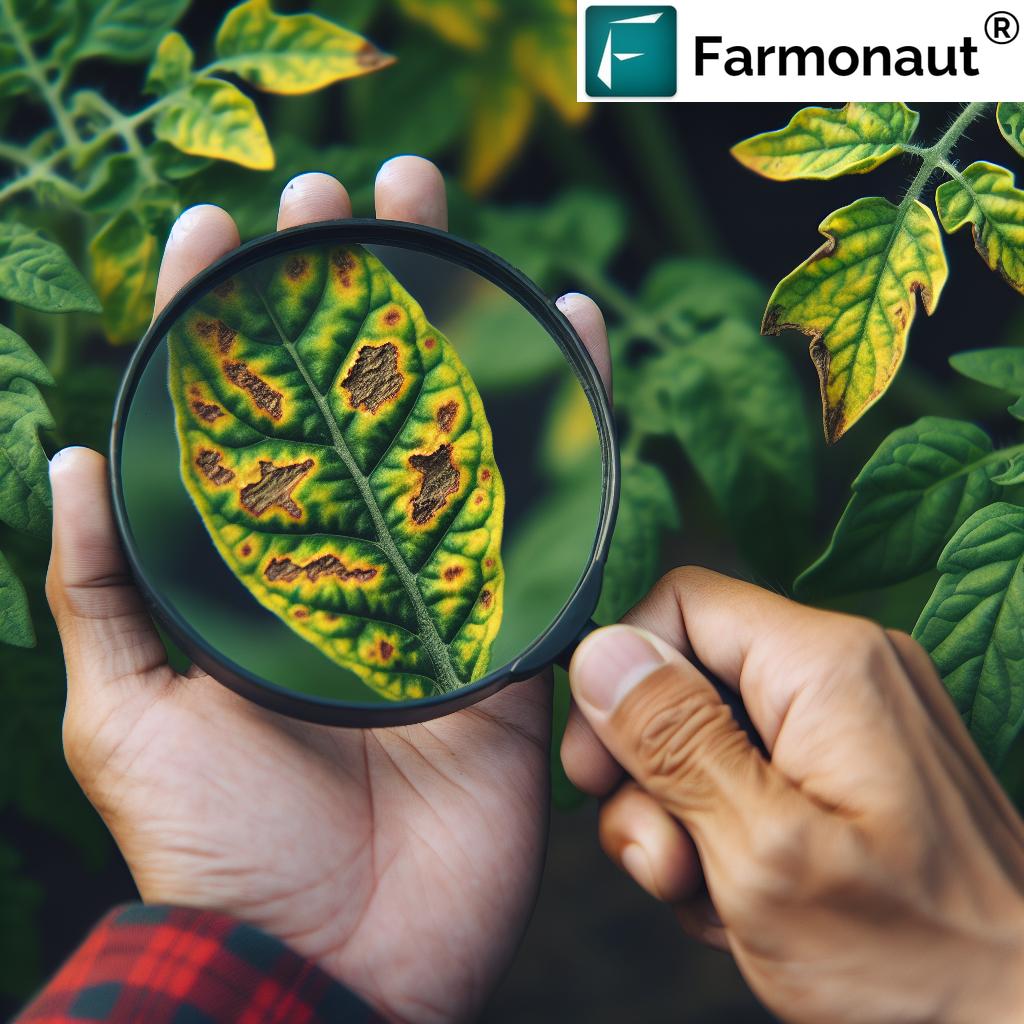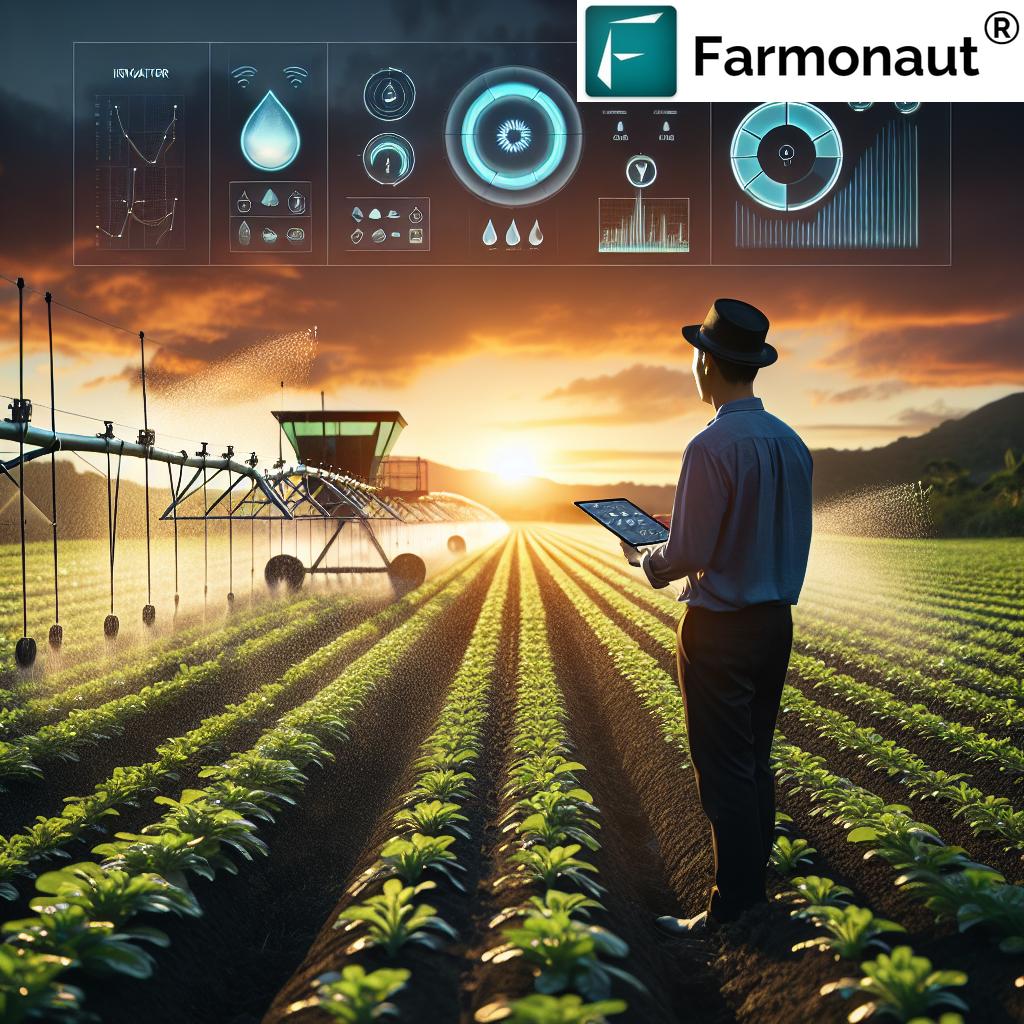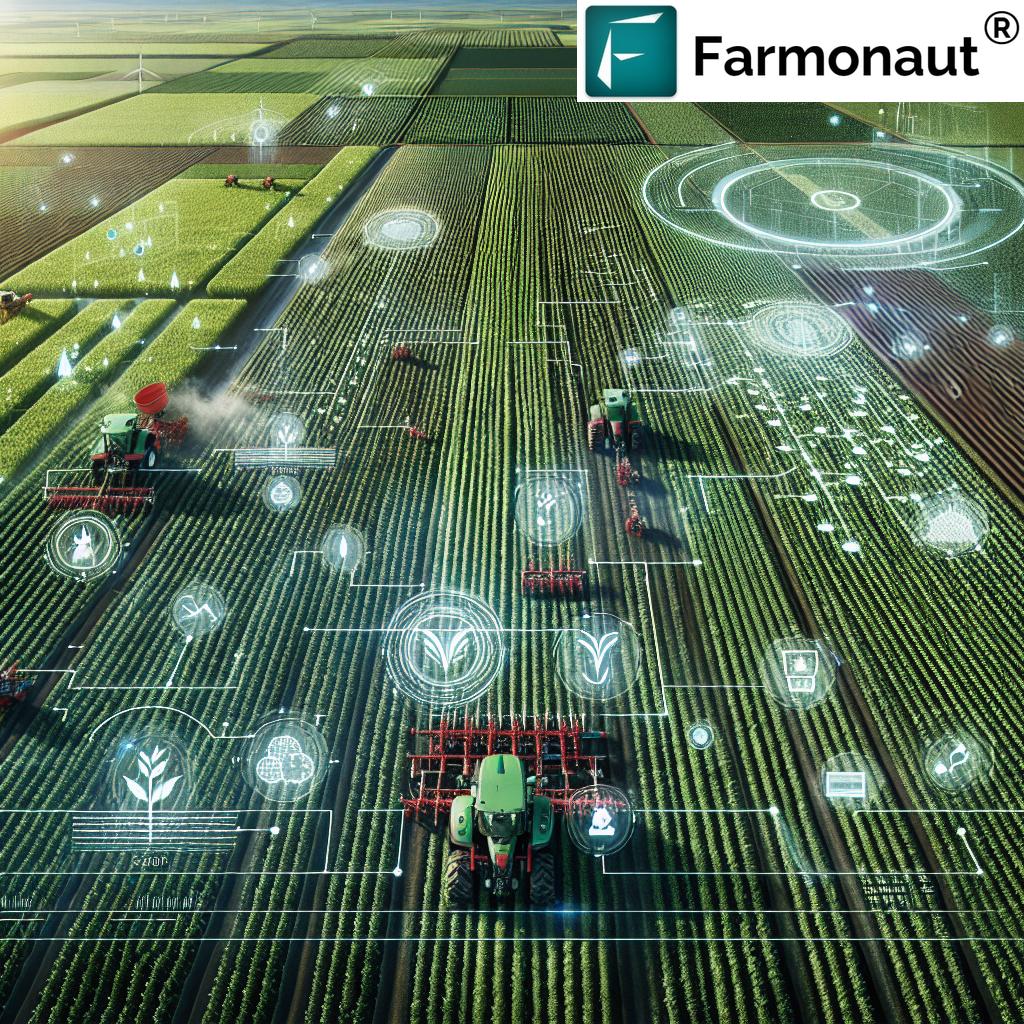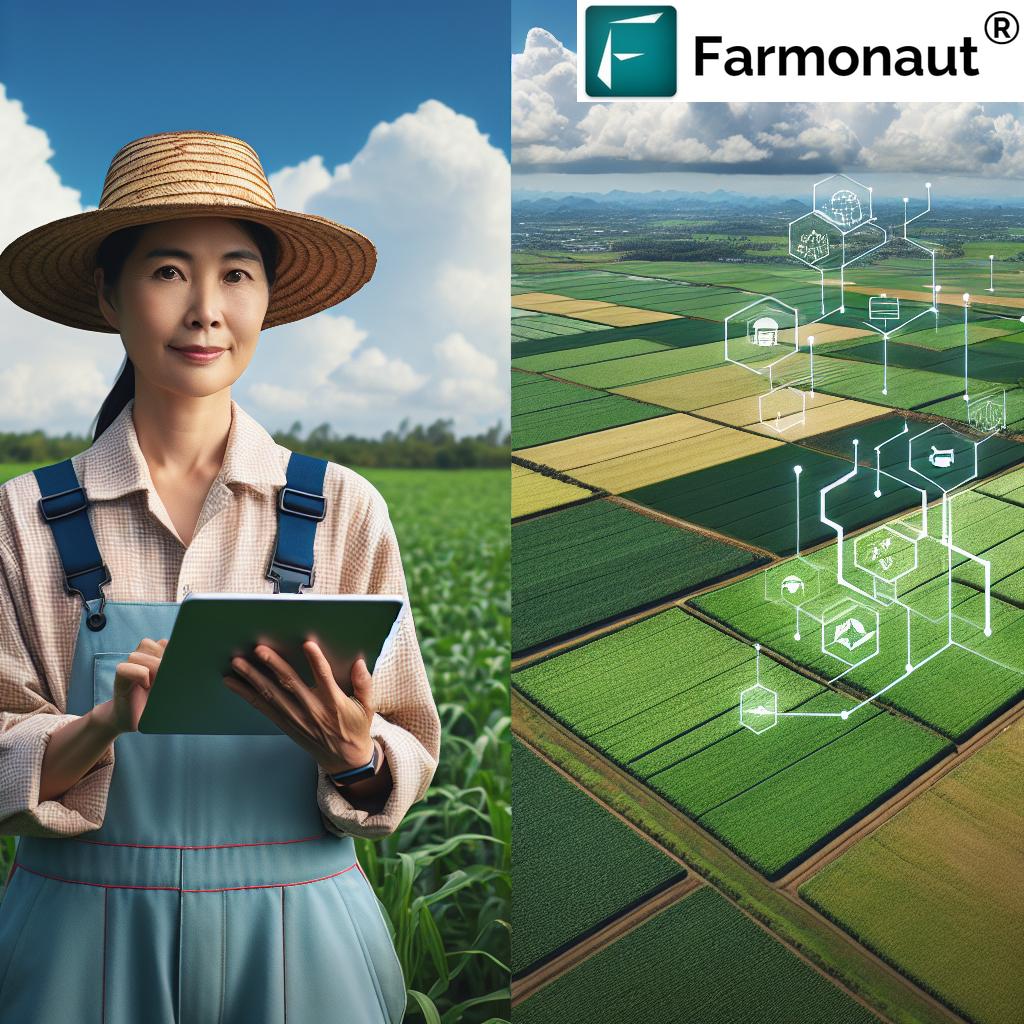Agriculture Precision Technology: 7 Smart Advances
In the modern world, precision agriculture is transforming the way we grow food, manage land, and sustain natural resources. Farmers are harnessing an array of advanced farming practices —from GPS-guided tractors to real-time data analytics— to boost efficiency, reduce costs, and promote sustainability. Whether you’re a farmer, agri-business professional, or simply curious about technological innovations in agriculture, understanding these 7 smart advances is vital for engaging in the future of farming.
In this comprehensive guide, we will explore how the fusion of precision farming technologies—notably GPS, remote sensing for crop monitoring, data analytics in agriculture, variable rate technology in farming, precision irrigation systems, automation in agriculture, and tools for crop health monitoring—is revolutionizing farming. We will also discuss the benefits, challenges, and the pivotal role of solutions by Farmonaut, a pioneering agricultural technology provider, in making smart and sustainable farming accessible to all.
Did You Know? (Trivia)
“Over 70% of precision agriculture systems now use satellite imagery for real-time crop monitoring and analysis.”
What Is Precision Agriculture?
Precision agriculture, also known as precision farming, refers to an innovative, data-driven approach to managing crops and livestock. It utilizes advanced technologies—including satellite imaging, sensors, GPS, data analytics, and automated machinery—to optimize every input (such as seeds, water, fertilizer, and pesticides), ensuring they’re applied at the right place and right time.
This focus on precision helps boost crop health monitoring, reduces resource waste, and enables more sustainable farming solutions. By leveraging actionable insights and smart farming technologies, farmers can maximize yields while minimizing their environmental impact.
Key Components of Precision Agriculture: 7 Smart Advances
Discover the seven most impactful precision farming technologies that are shaping the future of advanced farming practices:
1. Global Positioning System (GPS): Bringing Geo-Precision to Fields
The Global Positioning System (GPS) is a satellite-based navigation technology that provides farmers with real-time, accurate location data. GPS has revolutionized how we approach several field operations including:
- Precise planting and harvesting
- Targeted spraying and fertilization
- Accurate mapping and boundary marking
- Reduced overlap and resource waste
This precision enables efficient resource utilization, saving money and supporting more sustainable farming solutions. Modern equipment integrates GPS to automate navigation, ensuring that inputs are applied exactly where needed.
Learn more about GPS in modern farming
2. Remote Sensing and Imaging: Satellite Eyes for Crop Monitoring
Remote sensing for crop monitoring uses data from satellites and drones equipped with specialized sensors to capture high-resolution imagery of large farm areas. These technologies provide up-to-date information on:
- Crop health variability across fields
- Soil moisture levels and irrigation needs
- Detection of pest infestations and diseases
- Early-warning for nutrient deficiencies
- Assessment of harvesting timing
Remote sensing through satellite imagery is an affordable precision farming tool for all scales of farmers.
Explore how remote sensing boosts precision farming
Want to harness remote sensing for your farm? Farmonaut provides satellite-based crop health monitoring, including vegetation indices, soil moisture, and AI-guided field advisory, available via our app and API.
Discover more about Farmonaut’s crop, plantation & forest advisory
3. Data Analytics and Machine Learning: Insights-Driven Agriculture
Data analytics in agriculture leverages machine learning and AI to analyze vast datasets from sensors, weather stations, equipment, and remote sensing. These algorithms identify patterns, predict outcomes, and enable smarter decisions such as:
- Optimizing planting schedules based on historical and forecasted weather
- Forecasting crop yields with greater accuracy
- Recommending agronomic practices according to soil, weather, and crop conditions
- Predicting potential pest and disease outbreaks
- Monitoring ongoing field performance to fine-tune strategies
These innovations fundamentally shift agriculture towards being proactive and predictive rather than reactive. Farmonaut’s platform harnesses AI and ML, delivering actionable insights in real time for superior farm management and enhanced crop health.
Deep dive into how data innovation fuels smart farming
Farmonaut’s blockchain-based traceability solution (learn more)
enables transparent and immutable records of crop origin, processing, and logistics—critical for food safety and supply chain security.
4. Variable Rate Technology (VRT) in Farming: Targeted Applications for Maximum Impact
Variable Rate Technology in farming, or VRT, allows farmers to apply seeds, fertilizers, pesticides, and even water at variable rates across the same field. Rather than treating every part of the land equally, VRT ensures each zone gets the inputs it actually needs. Key benefits include:
- Reduced input waste and costs
- Minimized environmental runoff
- Higher overall efficiency and crop yields
- Optimized use of labor and machinery
This targeted application makes farming more sustainable, saving up to 20-30% in fertilizers while resulting in optimal plant growth and improved yields.
Read more on VRT in agriculture
5. Precision Irrigation Systems: Every Drop Counts
Precision irrigation systems use a combination of soil moisture sensors, weather data, and automated controls to deliver water precisely where and when crops need it. These systems drastically reduce water waste and can result in substantial savings, especially in water-scarce regions.
- Automated irrigation based on real-time field needs
- Improved root development and crop health
- Integration with fertigation for optimized nutrient delivery
- Remote monitoring and management through apps and dashboards
Data-driven irrigation not only saves water but also maximizes yields and mitigates drought risk. Discover how Farmonaut’s precision farming technologies deliver field-specific, cost-effective solutions for all farm sizes.
“Data analytics in precision farming can reduce fertilizer use by up to 30% while maintaining optimal crop yields.”
6. Automation in Agriculture: The Rise of Smart Machinery and Robotics
Automation in agriculture involves driverless tractors, robotic planters, harvesters, and sprayers that can operate with minimal human intervention. Benefits include:
- Consistent, precise field operations across day and night
- Significant reduction in labor costs and addressing labor shortages
- Higher operational efficiency in planting, spraying, and harvesting
- Improved data collection from integrated sensors
Advanced robotics and AI-driven machinery help with planting, weeding, and crop harvesting—even in challenging weather conditions. Increasingly, farmers can manage entire operations remotely with intuitive dashboards.
Discover automation trends revolutionizing farming
Strengthen operational efficiency with Farmonaut’s fleet and resource management (learn more)—track machinery, optimize usage, and reduce operating costs through real-time monitoring and intelligent logistics.
7. Precision Livestock Farming (PLF): Data for Animal Welfare and Productivity
Precision Livestock Farming (PLF) uses sensors, cameras, microphones, and wearable devices to closely monitor animal health, welfare, and growth in real time. Benefits include:
- Tailored feeding schedules and improved nutrition
- Early detection of health issues or stress
- Automated breeding and calving alerts
- Better overall animal management and welfare
By applying data analytics to livestock, farms achieve enhanced productivity, improved yields, and sustainable animal husbandry while reducing resource and input waste.
Read more about PLF and livestock monitoring advances
Comparative Feature-Impact Table: Precision Agriculture Advances
To quickly visualize the real-world impacts of each precision farming technology, see this easy-to-compare table:
| Technology | Key Feature(s) | Estimated Resource Savings (%) | Impact on Crop Health (Estimated Yield Increase %) |
|---|---|---|---|
| GPS | Precise field mapping, automated navigation, reduced overlap | 10-20% | 5-10% |
| Remote Sensing & Imaging | High-resolution satellite/drone imagery, crop health monitoring | 20-30% | 10-15% |
| Data Analytics & Machine Learning | Predictive analytics for yield, early warnings, decision recommendations | 15-25% | 10-25% |
| Variable Rate Technology (VRT) | Zone-based input application, minimize overuse | 20-30% | 5-15% |
| Precision Irrigation | Moisture sensors, automated irrigation scheduling | 30-50% | 10-20% |
| Automation & Robotics | Driverless tractors, robotic operations, remote management | 15-40% (labor & input) | 10-20% |
| Precision Livestock Farming (PLF) | Real-time animal health/welfare monitoring | 10-20% | 5-15% |
Farmonaut: Making Precision Agriculture Accessible for All
At Farmonaut, our mission is to make precision agriculture affordable and accessible to farmers everywhere. We deliver advanced, satellite-based farm management solutions through Android, iOS, web, and API routes.
Our technologies harness the power of satellite imagery, AI, machine learning, and blockchain to provide:
- Real-time crop health monitoring and vegetation indices
- AI-powered field advisories and yield prediction
- Blockchain-based traceability tools for transparent supply chains
- Fleet and resource management tools for cost-efficient operations
- Carbon footprint tracking for sustainable farming solutions
Accessible via our apps and API, we ensure smallholders, large farms, NGOs, governments, and agribusinesses can all benefit—scaling solutions from single fields to nationwide programs.
Whether you manage a single crop, a vast plantation, or an agribusiness fleet, discover Farmonaut’s specialized services for large-scale farm management:
Agro-Admin App
For sustainable supply chains and improved access to finance, see how satellite-based verification transforms crop loan and insurance:
Crop Loan and Insurance
Key Benefits of Precision Agriculture
- Increased Efficiency: Inputs are used only where and when required, leading to resource savings, lower costs, and higher yields.
- Environmental Sustainability: Targeted applications minimize runoff and pollution, supporting sustainable farming solutions.
- Data-Driven Decision-Making: Real-time data analytics empower farmers to make informed decisions, optimizing outcomes.
- Labor and Cost Savings: Automation and VRT reduce manual labor and operational costs, improving profitability.
- Improved Crop and Livestock Health: Timely interventions and monitoring enhance productivity and animal welfare.
For farms targeting reduced emissions and carbon-neutral operations, Farmonaut’s carbon footprinting (learn more) is essential for tracking and achieving environmental goals.
Challenges in Adopting Precision Farming Technologies
- High Initial Costs: Advanced hardware, sensors, and automation systems can be expensive to deploy, especially for small farmers. However, affordable alternatives, such as Farmonaut’s satellite-based monitoring, enable access without high capital investment.
- Data Management & Ownership: The massive influx of data requires secure storage, privacy controls, and clarity on ownership.
- Technological Complexity: Integrating multiple technologies and platforms can be challenging and often demands additional training for staff and operators.
- Standardization Issues: Sometimes lack of interoperability and uniform standards makes blending various devices or software systems difficult.
- Infrastructure & Connectivity: Reliable internet and cellular networks are needed for full benefits—these may be lacking in remote rural areas.
With rapid development in cloud, app, and web-based platforms, many of these challenges are being addressed, paving the way for broader adoption.
Review government insights on precision farming challenges
The Future of Precision Agriculture
The rapid evolution of precision agriculture is set to continue, thanks to continual advancement in technology and data analytics. Trends shaping the future include:
- Rise of Autonomous Machinery: Increasing use of robotics, automated operators, and AI for totally unmanned field operations.
- Integration of AI: Smarter, self-learning systems that predict crop and livestock needs with ever-improving accuracy.
- Affordable Access: Lower infrastructure costs and cloud-based services making smart farming scalable for every farmer, not just agribusiness giants.
- Advanced Sustainability Monitoring: Real-time carbon footprint, resource utilization, and compliance with environmental standards.
- Data Collaboration: Secure, standardized platforms for sharing de-identified farm data to boost industry-wide insights, research, and policy-making.
As these developments unfold, precision farming technologies will play a critical role in meeting global food needs—safely, efficiently, and sustainably.
Frequently Asked Questions (FAQ) – Precision Agriculture
-
Q: What is precision agriculture?
A: Precision agriculture is a technology-centric farming approach that uses GPS, sensors, satellites, and data analytics to optimize field-level management regarding crops and livestock. -
Q: How does GPS make farming more efficient?
A: GPS enables highly accurate mapping, navigation, and automation of farming equipment—reducing overlap, minimizing input waste, and supporting site-specific management. -
Q: What are the advantages of remote sensing?
A: Remote sensing delivers high-resolution crop and soil imagery, enabling earlier detection of crop stress, diseases, and environmental variability for better management decisions. -
Q: Who can benefit the most from precision farming technologies?
A: Smallholders, large-scale farmers, agribusinesses, and even cooperatives can all benefit, especially when affordable, scalable solutions—such as Farmonaut—are used. -
Q: How do automation and robotics contribute to sustainability?
A: Automated machinery reduces labor demands, enhances resource utilization, ensures consistency in field operations, and limits unnecessary environmental impact. -
Q: Is data privacy a concern in precision agriculture?
A: Yes, managing and securing large quantities of farm data (especially when shared across platforms) requires strong privacy controls and clear ownership policies. -
Q: How can I start using precision farming technologies?
A: Starting is easier than ever with web and mobile-based platforms like those from Farmonaut, offering remote monitoring, field analytics, and advisory without expensive hardware.
Conclusion: Precision Agriculture – Shaping the Future of Food and Farming
Precision agriculture is more than just a trend—it’s a revolutionary shift in how we approach farming, integrating advanced technology, data analytics, and automation for renewed efficiency, sustainability, and productivity. By embracing innovations like GPS-driven equipment, remote sensing for crop monitoring, and real-time data insights, the agricultural industry stands well-positioned to feed a growing population while protecting our environment.
As a technology enabler, Farmonaut is dedicated to ensuring these powerful advantages are accessible, affordable, and effective for every farmer. We believe that the future of agriculture is digital, interconnected, and sustainable — and it starts with precision.
Explore Farmonaut’s advanced farming practices and smart solutions to take your agriculture to the next level today!


